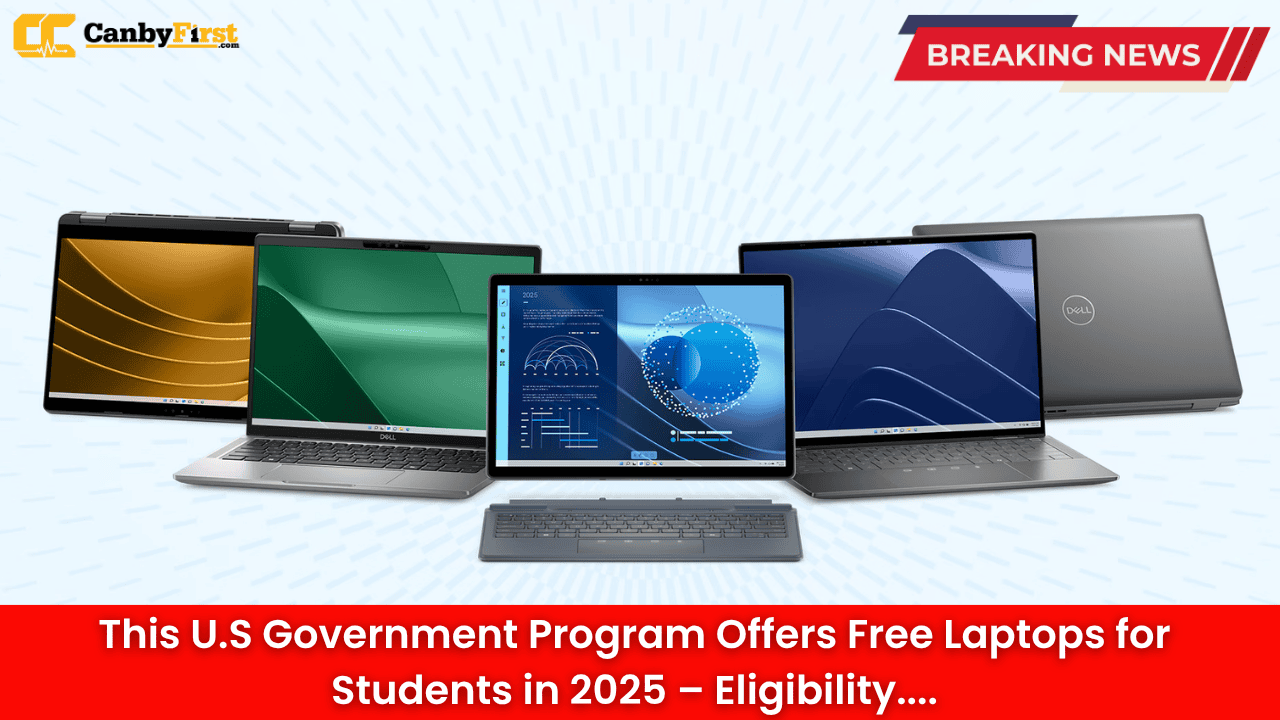The U.S. government has officially rolled out a sweeping initiative in 2025 to provide free laptops to eligible students nationwide. This move is part of a broader effort to narrow the digital divide and ensure students from all income levels have access to the technology they need for academic success. With classrooms increasingly shifting toward digital learning platforms, the program is garnering widespread attention from parents, educators, and policymakers.
The Digital Divide Challenge
For years, disparities in access to technology have created educational barriers, particularly for low-income families. While schools across the country have integrated digital assignments, online classes, and research tools into the curriculum, thousands of students have been left behind due to the lack of laptops or reliable internet.
The government’s free laptop program aims to eliminate this divide. Officials noted that a reliable device and internet connection are now considered essential educational tools, almost as necessary as textbooks were in decades past.
Also Read
Who Is Eligible?
The eligibility rules for this program have been designed to prioritize the most vulnerable groups. According to federal guidelines, the free laptops will be distributed to:
-
Students from households earning below a certain income threshold, based on updated federal poverty line measures.
-
Children enrolled in public schools, particularly those in K-12 grades who require digital access for everyday learning.
-
College students from financially disadvantaged backgrounds, particularly first-generation college attendees.
-
Students who are already participating in other federal assistance programs, such as free or reduced lunch programs, Pell Grants, or housing assistance.
Eligibility applications are reviewed through schools and community centers to ensure equitable distribution without overwhelming bureaucracy.
How the Program Works
Once a student is deemed eligible, their school district coordinates directly with the federal government to provide laptops. Many of these devices are sourced through partnerships with major technology companies that have agreed to supply affordable models optimized for education.
The laptops come pre-loaded with essential educational software, cybersecurity features, and productivity tools such as word processing, spreadsheets, and video conferencing applications. Additionally, in rural areas or communities with limited internet access, the program includes subsidized mobile hotspots to ensure connectivity.
Educational Impacts Expected
Educators and policymakers anticipate significant improvements in learning outcomes. Teachers will be able to assign online coursework with the assurance that students can complete it at home. Parents are also expected to benefit, as children will require fewer trips to public libraries or shared community resources for homework.
Furthermore, officials believe this initiative can help bridge gaps in science, technology, engineering, and mathematics (STEM) education by encouraging greater digital literacy from an early age.
Addressing Concerns
Despite the positive reception, some concerns have emerged. Critics worry about device misuse, technical maintenance, and long-term funding. Questions are being raised about whether the laptops will need replacement over time and whether families will be responsible for repairs.
In response, the government has announced a support plan that includes:
-
Technical support hotlines for troubleshooting.
-
Low-cost or free repair services for damaged devices.
-
Parental seminars on encouraging safe and productive computer use.
These measures are intended to ensure the program remains sustainable beyond its initial rollout in 2025.
Broader Economic and Social Benefits
The initiative also has broader economic benefits. By equipping students with laptops, the government is empowering future generations with digital skills critical for employment opportunities. In a job market increasingly dependent on technological proficiency, early digital access may prepare students for careers in technology-driven sectors.
On a social level, reducing digital inequity is expected to promote fairness in education. Students from low-income or rural backgrounds will gain the same exposure to technology as their peers in wealthier districts.
Looking Ahead
The free laptop program represents one of the most ambitious educational technology initiatives launched in recent history. Education leaders believe that its long-term success will depend on continuous monitoring and adaptation, especially as both technology and educational needs evolve.
Parents and communities are being encouraged to support the program by ensuring students use their devices productively and responsibly. As the nation continues to embrace digital education, this program could significantly reshape how future generations learn.
FAQs
1. Who qualifies for the free laptops in 2025?
Students from low-income households, K-12 public school students, college students on financial aid, and children already receiving government benefits are eligible.
2. How do students apply for the program?
Applications are processed through schools, which coordinate with government agencies to verify eligibility.
3. Are the laptops permanently owned by the students?
Yes, in most cases the laptops are given to students for long-term use without the need for return.
4. Will students also receive free internet access?
Families in underserved areas may be provided with subsidized mobile hotspots or assistance with home internet installation.
5. What software comes pre-installed on the laptops?
Each laptop includes educational tools like word processors, spreadsheet programs, video conferencing apps, and cybersecurity protections.












